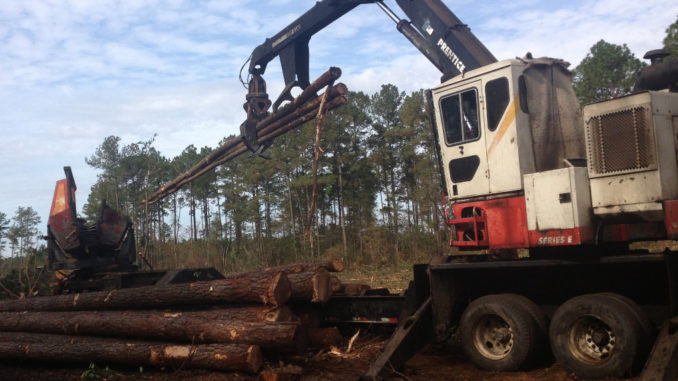
Timber prices rise and fall based on the demand for raw material slotted for conversion into finished products. And the demand for forest products has fluctuated with advances in certain sectors of the economy that can be affected by foreign and domestic uses. Today’s market is recovering well, bringing in good returns for landowners.
Over the past decade, the up-and-down economy has contributed to less-than-desirable returns for forest landowners. However, recent economic rallies have improved the market, making it a better idea to close out on a mature stand of timber ready for final harvest.
Since hardwood is slow-growing, demand has remained strong in the marketplace, causing hardwood prices to rocket towards records each year, and it is not just for saw timber. Hardwood and pulpwood price points climb each year to new levels, and nothing is expected to slow down this rise. Landowners whose forests are dominated by slow-growing hardwood species can expect to receive strong returns in current markets and in the future.
On the other hand, pine is taking on a new perspective in the marketplace. While markets are shaping up, bringing substantial profits to landowners, the traditional price hierarchy between pine pulpwood, pine veneer and pine saw timber has changed. Where there used to be a major price difference between old, mature pine logs and juvenile pulpwood, in today’s market, the price gap is much smaller.
In short, pulpwood prices are high, and saw timber prices are bringing up the rear. Pulpwood prices have soared in recent years due to demand for kraft board and other paper products, both domestically and foreign. Paper mills around the world are steadily chewing away at the supply. The demand and price in the Carolinas is growing each year. Landowners can expect to receive strong returns for pulpwood today and into the future.
The need for the large pine trees used for lumber and veneer production softened in the crippled economy a few years ago and users found replacements for what were once the kings of the marketplace. Large, old-growth logs are just not as important as other types of wood products, yet the need for lumber and veneer-size logs will always be a part of the forest-products industry in the Carolinas, offering landowners with returns for these mature trees.
Forest rotations approaching 50 years are becoming less rewarding for landowners looking to maximize the profit potential on their lands. The value gap between mature, old-age pine trees and juvenile pine pulpwood is narrowing each year. Landowners looking to bank on their timber need to shorten their rotations to 30 to 40 years to maximize their earning potential.




Be the first to comment